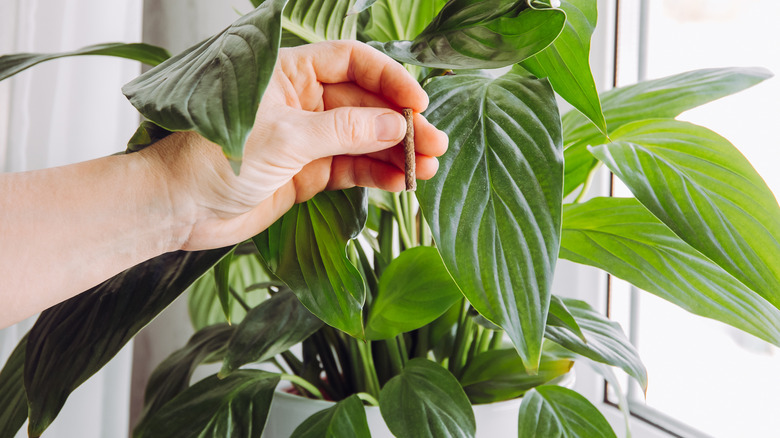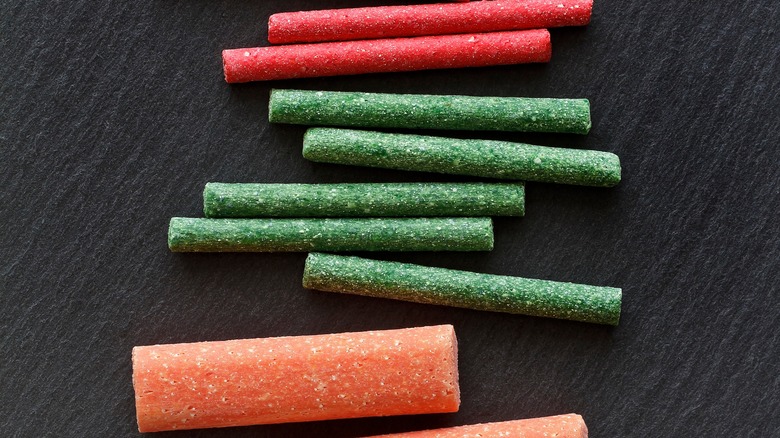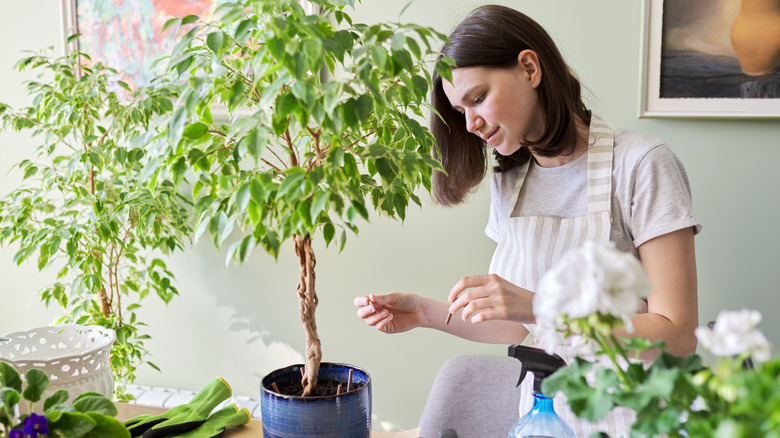How Fertilizer Spikes Work And When You Should Use Them
As you browse fertilizer supplies at your favorite garden center, you come upon fertilizer spikes. The packaging claims you just place them in the soil, and they work to provide your plant with the nutrients it needs. Is it that easy? In short, yes, fertilizer spikes are an effective way to supplement your plant's soil nutrition. They are super simple to use indoors and outdoors, and depending on the type you select, you can use them for most plants.
Fertilizer spikes are a solid option when you don't have a lot of time to amend the soil and keep up with your plant's nutrient needs or when you want to ensure your plants are getting added nutrients you know the soil isn't providing. They're not necessary in all cases, especially if you have a good soil base and not all products are the same in terms of quality. You need to choose the formula that's best suited for the type of plant you're feeding, too. Though they may cost a bit more than granular fertilizer, spikes may save you some time and frustration. They also ensure your garden gets the fertilizer it needs to thrive.
How fertilizer spikes work
Fertilizer spikes are much like the granular fertilizer formulas you may add to your garden soil to encourage plant growth, but they are in small to large spikes or tubular formations that allow you to stick them into the soil near the plant and virtually forget them. The moisture, fungal, and bacterial activity within the soil helps to break them down over time, creating more of a slowed release of nutrients being added to the soil. Over time, the nutrients break down into usable forms for the plant, allowing for potential disease resistance and overall health and growth of the plant itself.
Several manufacturers produce fertilizer spikes, and each has its own formula, but most will release nutrients over a period of several months. When selecting them, follow the manufacturer's directions on plant use, timing, and positioning of the spikes. Most have a nutrient balance of 1-2-1 (nitrogen, phosphate, and potassium), though there are some that have different levels. Some plants benefit from a much lower phosphate level (even a 1-1-1 ratio).
One key factor to consider when choosing fertilizer spikes is whether they are chemical-based or all-natural. It's common (and often less expensive) to purchase chemical-based products. When possible, look for natural or organic versions, especially if you want a more natural composition for your soil or for plants that produce food.
How to use fertilizer spikes
It's hard to mess up when using fertilizer spikes (which makes them the ideal choice for the minimalist gardener). It's not common to over-fertilize with them since they break down slowly over time. That helps to prevent nitrogen damage to root systems which can be common when using too much liquid or granular fertilizer.
You'll often position them about 2 feet from the root ball. You can also place them at the end of a dripline so that when the water moves across them, it helps to deliver just enough nutrients to the plant itself. You typically don't need more than one spike per houseplant or one spiker for every 3 feet of garden space. Once in place, you don't have to do anything else except replace them about every six months. Placing one in the spring and again in early fall tends to be ideal. This gives the plants ample support when they need it the most.
Some fertilizer spikes are designed to support tree health specifically. If you have dead tree branches or limited leaf development, that's a good sign your tree could benefit from added fertilization. You can also choose those designed to support shrub health. Follow manufacturer-specific directions for use to ensure you don't make mistakes when fertilizing your indoor or outdoor plants.


